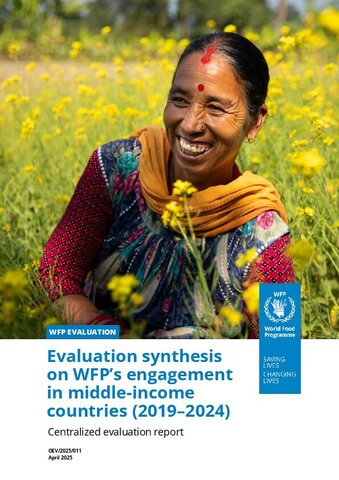
This synthesis of evidence from evaluations on WFP’s engagement in middle-income countries (MICs) conducted by the Office of Evaluation in 2024 looked at WFP’s strategic positioning, partnerships and results in MICs. It analysed evidence from 73 WFP evaluations conducted in 25 MICs, between 2019 and 2024.
Despite representing the majority of WFP’s operational contexts, MICs accounted for only 34 percent of its total funding over the period 2019–2024. The synthesis concludes that:
- The category of MICs is too broad to inform programming effectively. However, upper-middle-income countries share characteristics that make them particularly distinct within this broader group;
- The absence of a clear rationale for WFP’s engagement in such settings has constrained its strategic positioning;
- WFP could better articulate its strategies and programme offer particularly in MICs hosting refugees and internally displaced persons, and assisting irregular migrants; in MICs where it does not target direct beneficiaries; and in MICs transitioning out of crisis.
The main elements of strengths identified in the evaluations are:
- WFP's increasingly diversified role and programme offer in MICs, while maintaining consolidated service delivery and emergency response functions;
- WFP’s adaptive capacity to respond to government requests and pivot towards crisis response.
Evidence of key contributions by WFP in MICs was found in: strengthened food security and nutrition systems; expanded social protection during crises; improved policy frameworks; enhanced disaster preparedness; gender-inclusive economic opportunities; and improved social cohesion and refugee integration into national systems.
Challenges and missed opportunities in MICs were noted in:
- Navigating uncertain financing prospects when countries move from low to middle-income status;
- Moving ‘upstream’ from small-scale, single initiatives and adopting a coherent approach to programming and partnerships, considering the vulnerability to piecemeal donor funding;
- Capturing and conveying WFP’s added value and contributions to national systems and capacities.
